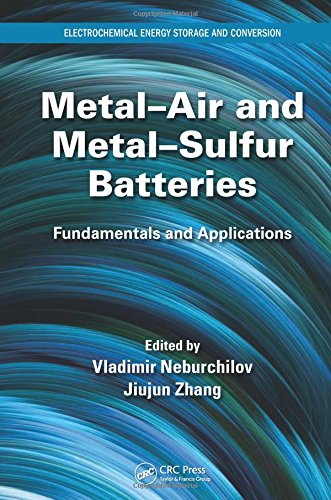

Most ebook files are in PDF format, so you can easily read them using various software such as Foxit Reader or directly on the Google Chrome browser.
Some ebook files are released by publishers in other formats such as .awz, .mobi, .epub, .fb2, etc. You may need to install specific software to read these formats on mobile/PC, such as Calibre.
Please read the tutorial at this link: https://ebookbell.com/faq
We offer FREE conversion to the popular formats you request; however, this may take some time. Therefore, right after payment, please email us, and we will try to provide the service as quickly as possible.
For some exceptional file formats or broken links (if any), please refrain from opening any disputes. Instead, email us first, and we will try to assist within a maximum of 6 hours.
EbookBell Team

4.0
66 reviewsMetal–air and metal–sulfur batteries (MABs/MSBs) represent one of the most efficient-energy storage technologies, with high round trip efficiency, a long life cycle, fast response at peak demand/supply of electricity, and decreased weight due to the use of atmospheric oxygen as one of the main reactants. This book presents an overview of the main MABs/MSBs from fundamentals to applications. Recent technological trends in their development are reviewed. It also offers a detailed analysis of these batteries at the material, component, and system levels, allowing the reader to evaluate the different approaches of their integration. The book provides a systematic overview of the components, design, and integration, and discusses current technologies, achievements, and challenges, as well as future directions. Each chapter focuses on a particular battery type including zinc–air batteries, lithium–air batteries, aluminum–air batteries, magnesium–air batteries, lithium–sulfur batteries, and vanadium–air redox flow batteries, and metal–sulfur batteries.
Features the most recent advances made in metal–air/metal–sulfur batteries.
Describes cutting-edge materials and technology for metal–air/metal–sulfur batteries.
Includes both fundamentals and applications, which can be used to guide and promote materials as well as technology development for metal–air/metal–sulfur batteries.
Provides a systematic overview of the components, design, and integration, and discusses current technologies, achievements, and challenges, as well as future directions.
Covers a variety of battery types in depth, such as zinc–air batteries, lithium–air batteries, aluminum–air batteries, magnesium–air batteries, lithium–sulfur batteries, vanadium–air redox flow batteries, and metal–sulfur batteries.